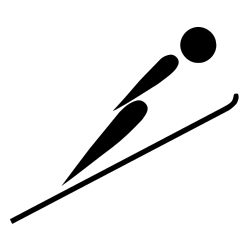| Nation | Starting Spots | Number of Athletes | Athletes |
|---|
 Germany Germany | 8+10 | 19 | Michael Uhrmann, Sven Hannawald, Georg Spaeth, Martin Schmitt, Christof Duffner, Stefan Pieper, Maximilian Mechler, Michael Neumayer (not in Innsbruck), Stephan Hocke (until Innsbruck)
National Group: Alexander Herr, Jörg Ritzerfeld, Kai Bracht, Michael Möllinger, Dirk Else, Ferdinand Bader, Frank Ludwig, Daniel Klausmann, Frank Reichel (Oberstdorf only), Roland Audenrieth (Garmisch-Partenkirchen only) |
 Austria Austria | 8 + 10 | 20 | Martin Höllwarth, Andreas Widhölzl, Andreas Goldberger, Andreas Kofler, Florian Liegl, Mathias Hafele, Thomas Morgenstern, Martin Koch (until Innsbruck)
National Group: Reinhard Schwarzenberger, Wolfgang Loitzl, Stefan Thurnbichler, Christian Nagiller, Bastian Kaltenböck, Balthasar Schneider, Bernhard Metzler, Stefan Kaiser, Manuel Fettner, Markus Eigentler (Innsbruck only), Stefan Becker (Bischofshofen only), Michael Nagiller (Bischofshofen only) |
 Bulgaria Bulgaria | 1 | 1 | Georgi Zharkov |
 Czech Republic Czech Republic | 3 | 4 | Jakub Janda, Jan Matura, Lukáš Hlava (until Garmisch-Partenkirchen), Jiří Parma (Innsbruck onward) |
 Estonia Estonia | 3 | 3 | Jens Salumäe, Jaan Jüris (not Innsbruck), Jouko Hein (Garmisch-Partenkirchen only) |
 Finland Finland | 8 | 8 | Janne Ahonen, Arttu Lappi, Matti Hautamäki, Tami Kiuru, Akseli Kokkonen, Veli-Matti Lindström, Jussi Hautamäki, Risto Jussilainen |
 France France | 3 | 3 | Nicolas Dessum (Innsbruck onward, Emmanuel Chedal (Innsbruck onward, Maxime Remy (Innsbruck only) |
 Italy Italy | 3 | 3 | Roberto Cecon, Alessio Bolgnani, Giancarlo Adami |
 Japan Japan | 5 | 5 | Noriaki Kasai, Kazuyoshi Funaki, Hideharu Miyahira, Hiroki Yamada, Kazuya Yoshioka |
 Kazakhstan Kazakhstan | 3 | 3 | Pawel Gaiduk, Stanislav Filimonov, Maxim Polunin |
 Netherlands Netherlands | 2 | 2 | Ingemar Mayr, Christoph Kreuzer (Innsbruck onward) |
 Norway Norway | 8 | 8 | Sigurd Pettersen, Roar Ljøkelsøy, Bjørn Einar Romøren, Kim-Roar Hansen, Henning Stensrud, Lars Bystøl, Tommy Ingebrigtsen, Anders Bardal |
 Poland Poland | 4 | 5 | Adam Małysz, Marcin Bachleda, Tomasz Pochwała, Tomisław Tajner (until Garmisch-Partenkirchen), Robert Mateja (Bischofshofen only) |
 Russia Russia | 4 | 5 | Valery Kobelev, Ildar Fatchullin, Ilya Rosliakov, Alexei Silaev (until Innsbruck), Dmitri Vassiliev (Bischofshofen only) |
 Slovakia Slovakia | 2 | 2 | Martin Mesík, Dušan Oršula |
 Slovenia Slovenia | 6 | 6 | Primož Peterka, Peter Žonta, Damjan Fras, Robert Kranjec, Igor Medved, Rok Benkovič (Innsbruck onward) |
 South Korea South Korea | 4 | 4 | Kim Hyun-ki, Kang Chil-ku, Choi Yong-jik (until Innsbruck), Choi Heung-chul (until Innsbruck) |
 Sweden Sweden | 2 | 2 | Kristoffer Jåfs, Isak Grimholm |
 Switzerland Switzerland | 4 | 4 | Simon Ammann, Andreas Küttel, Marco Steinauer (until Innsbruck), Sylvain Freiholz (Garmisch-Partenkirchen and Innsbruck) |
 United States United States | 3 | 3 | Alan Alborn, Clint Jones (until Garmisch-Partenkirchen), Tommy Schwall (until Garmisch-Partenkirchen) |
|

